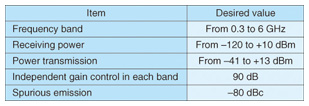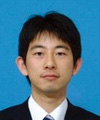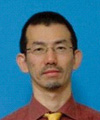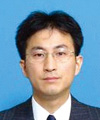 |
|||||||||||||||||||||||||||||
|
|
|||||||||||||||||||||||||||||
|
Feature Articles: Wireless Access Technologies that Enhance Convenience by Network Linkage Vol. 11, No. 3, pp. 20–25, Mar. 2013. https://doi.org/10.53829/ntr201303fa4 Flexible Wireless System for User-centric Wireless Home NetworkAbstractWe are developing a flexible wireless system with the aim of achieving a wireless home network that users can use without being aware of wireless systems and that will be easy for network operators to operate and maintain. This article introduces an overview of the flexible wireless system, use cases for it, and key technologies needed to achieve it. 1. Introduction1.1 Current wireless networksRecently, considerable progress has been made in developing broadband wireless local area networks (LANs) for the 2.4-GHz and 5-GHz bands, reviewing frequency usage in the 920-MHz band to expand machine-to-machine (M2M) communication applications, and improving home automation and home security technology for the 300-MHz and 400-MHz bands. Various wireless systems that utilize the characteristics of each frequency band have been developed. However, in order to use these systems in home networks, users need a certain degree of knowledge of wireless systems, and they need to carry out the following tasks: 1) Selecting a wireless system that suits their purposes 2) Configuring the system’s access point (AP) and building the wireless network 3) Fixing hidden problems such as interference caused by APs or wireless terminals in the neighborhood 1.2 Future home networksIn future home networks, the use of information and communications technology (ICT) will make it possible to further advance the development of smart homes or smart communities that provide more varied and efficient home and social activities. At that time, it will be necessary for everyone, even those without wireless skills, to be able to use their wireless network easily. We are now researching and developing a flexible wireless system on a wireless home network that will make the above three tasks unnecessary. An image of the wireless home network of the future, as well as that of a conventional system, is shown in Fig. 1. The future network features a single flexible AP that supports all wireless systems from low-speed ubiquitous data transmission systems to high-speed wireless LANs. This makes it unnecessary for users to select a wireless system and build their own wireless home network. Furthermore, through remote analysis of radio spectra and remote support of wireless operations, we can provide a user-centric wireless home network that will enable users to use devices and applications without being aware of the wireless systems the network accommodates.
2. Technical overview of the flexible wireless systemTo enable users to effortlessly access and use wireless home network services without even being aware of the wireless systems their network accommodates, much less having to manage or monitor them, it is necessary to build a common signal processing platform that can accommodate a wide variety of wireless systems. The configuration of our flexible wireless system, which features such a platform, is shown in Fig. 2. The system comprises a flexible AP in the home network, a wireless signal processing server connected to the AP over the network, and engine servers to control them. In conventional wireless systems, an analog radio frequency (RF) frontend, an analog-digital converter (ADC)/digital-analog converter (DAC), and digital signal processing hardware are compressed into a single equipment unit. In our flexible wireless system, the analog RF frontend and ADC/DAC are incorporated into the flexible AP. The digital signal processing is performed through cooperation between the AP and the network server (Table 1). The system’s wideband and multiband analog RF frontend, which allows multiple frequency bands to be used simultaneously, makes it possible for the single flexible AP to accommodate various wireless terminals regardless of what frequency bands are used.
Cooperative software in the flexible AP and the network server performs the digital signal processing that needs to be processed differently for each accommodated wireless system. In addition, correspondence between the diverse wireless systems and enhancements made to them later can be achieved merely by replacing the software. OSGi technology*1 makes it possible to replace the software in cooperation with the functions and services of the home gateway. Furthermore, the transmission to the network server of radio wave data received in the flexible AP makes it possible to balance the load of the signal processing resources under high load conditions and to analyze the home radio environment in the network. Since there is a huge amount of digitized radio wave data, the ADC’s data compression function is deployed to transmit the data to the network server through fiber access networks. By aggregating the several nearby radio environments at the network, the system can analyze in detail hidden problems such as interference between different or identical systems. These distributed functions are controlled by the network engine servers, and this is what achieves the user-centric wireless home network.
3. Key technologiesIn this section, we introduce two key technologies that have enabled the development of the flexible AP. One is wideband and multiband radio frequency circuits that can operate at frequencies from several hundred megahertz up to 6 GHz. The other is data compression of digitized radio waves. 3.1 Wideband and multiband radio frequency circuitsRecent wireless communication systems such as wireless LANs or cellular systems require unified terminals and APs that operate in several frequency bands. They also require wideband and multiband RF circuits. Reports have been published on systems using tunable band pass filters and multiband amplifiers [1]–[3]. Conventionally, there are two general system compositions: 1) those using a number of single-band circuits in parallel [4], and 2) those using wideband circuits and digitized wideband radio wave data. The former is advantageous in that it enables a number of commercial circuits to be used; however, the problem is that the number of circuits increases along with the number of frequency bands. The latter is advantageous in that it comprises only a small number of circuits; however, it requires a high-speed and expensive ADC that can process a huge amount of digitized radio wave data. To overcome these problems, we developed a wideband low noise amplifier and a multiband simultaneous receiving mixer [5]. In contrast to conventional mixers that use a single local oscillator (LO) signal and receive a single RF signal, the mixer we developed uses multiple LO signals and receives multiple RF signals simultaneously, as shown in Fig. 3. Generally, multiband wireless systems require a wide dynamic range to handle multiple power levels with a relative difference of about 100 dB, which is caused by the differences in terminal locations or transmission power levels of each wireless system. Our mixer can control the conversion gain for each frequency band independently by using variable attenuators to control the relative power of the multiple LO signals. This enables down-converted intermediate frequency (IF) signals to be controlled so that they all have the same power levels. This in turn enables the ADC to operate on fewer bits than for the case of a wide dynamic range receiver, which reduces the amount of radio wave data. The mixer can also change the frequency band allocation of the received signals; e.g., a signal to be demodulated is allocated to a lower frequency in the IF frequency band while others, such as power-sensing signals, are set in higher frequencies. This system configuration makes it possible to reduce the number of radio circuits and to produce a radio circuit that can be implemented in the batch digital signal processing of any wireless system.
3.2 Data compression of digitized radio wavesBroadband radio waves received in the flexible AP are digitized by an ADC so that they can be transferred to the digital signal processing server via fiber access networks. However, the amount of data in digitized radio waves becomes very large; for example, if an entire radio wave of the 2.4-GHz ISM (industrial, scientific, and medical) band*2 is digitized, the amount of data per second becomes 2 Gbits*3. Therefore, it is necessary to apply a data compression technique that can reduce the amount of data to between 1/100 and 1/1000 of the original amount in order to enable the digitized radio wave data to be transferred to the digital signal processing server via the access networks. To minimize the required bandwidth for transferring the radio wave data, we focus on a certain feature, i.e., the sparsity of radio wave data, and investigate data compression that makes use of compressed sensing technology [6]. An overview of the compressed sensing technology is shown in Fig. 4. Compressed sensing is a new method for solving ill-posed inverse problems by utilizing the sparsity of data [7]. It allows us to reconstruct data by using sub-Nyquist*4 rate information. We have already achieved 1/400 data compression for radio signal detection by using the frequency and time domain sparsity of radio wave data and 1-bit quantization. We will attempt to improve this to 1/1000 data compression by using the space domain sparsity of radio wave data and a weighting method based on known information on the presence of a signal [8]–[10].
4. Future effortsIn the future we can expect to see expanded use of ICT and wireless communications along with the continuous review of frequency band usage, the development of new standards, and changes in new generations of wireless systems. To meet the challenges of such changes, we plan to continue our research and development work with the aim of achieving a wireless home network that users can use without being aware of wireless systems and that will provide easy maintenance and operation for network operators. References
|
|||||||||||||||||||||||||||||












